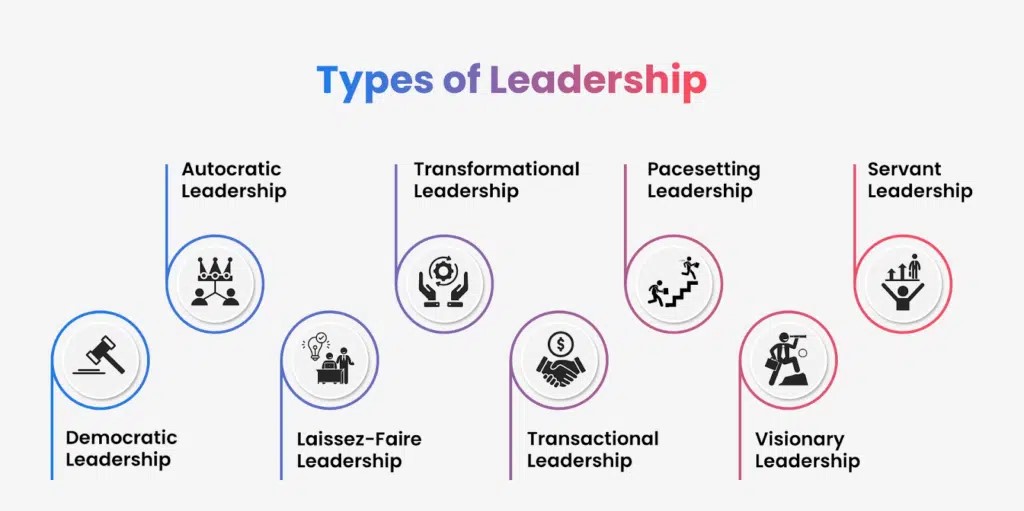Strategic Leadership: Key Traits and How to Develop Them
Table of Contents

- jaro education
- 21, March 2024
- 2:00 pm
Strategic leadership involves skillfully deploying managerial creativity, problem-solving proficiency, and forward-thinking strategic vision to propel both team members and the entire organization toward the achievement of long-lasting objectives. It goes beyond a rigid leadership style, embodying a distinct mindset that prioritizes the application of strategic thinking in leadership endeavors.
Margaret Andrews, an instructor specializing in Strategic Leadership at the Harvard Division of Continuing Education’s Professional & Executive Development program, sheds light on the nature of strategic leadership, which includes elements such as self-awareness, goal clarity, situational understanding, and effective decision-making. It extends beyond individual competence to encompass the adept orchestration of collective efforts, seeking optimal outcomes from both people and situations. Leaders embracing strategic leadership have engaged in the necessary internal exploration to lead with unwavering integrity, a clear vision, and a determined sense of purpose.
What is Strategic Leadership?
Strategic leadership embodies a distinctive approach where individuals wield influence to unite others towards a shared vision, fostering prosperity for their organization. Confronting uncertainties with assurance, strategic leaders tackle challenges by integrating creativity, visionary thinking, and an unwavering commitment to long-term success. They imbue their teams with a clear sense of direction, cultivating collaboration to collectively strive for a common objective.
The crux of strategic leaders’ prowess lies in their exceptional ability to discern optimal strategies and methodologies, ensuring sustained competitiveness amid the dynamic market landscape. To remain relevant, adaptability is paramount, encompassing adjustments to evolving technology, changing climates, and fluctuating economies. Organizations without strategic leaders risk faltering in the face of these transformative elements.
Survival and prosperity necessitate leaders proficiently leveraging available resources. Crafting services and strategies that empower organizations to navigate challenges and progress is imperative. Strategic leadership, therefore, stands as the linchpin, guiding organizations through complexities, ensuring resilience, and reinforcing their position in an unpredictable environment.
Role of Leadership in Strategic Management
Leadership’s role in strategic management is central, with leaders playing a fundamental part in shaping the direction, vision, and overarching success of an organization’s strategic initiatives. The following outlines key facets of leadership’s contribution to strategic management:
Crafting Vision and Mission
Leaders bear the responsibility of crafting and articulating the organization’s vision and mission. They establish a lucid and compelling direction that harmonizes with the organization’s values and objectives, laying the groundwork for strategic planning.
Guiding Strategic Planning and Decision-Making
Leadership is pivotal in the strategic planning process, guiding the formulation of strategies through the assessment of internal and external factors. Leaders set priorities and make decisions that align with the organization’s long-term goals, steering it toward sustainable success.
Shaping a Strategic Culture
Leaders mold the organizational culture to bolster strategic goals. They cultivate a culture characterized by innovation, adaptability, and continuous improvement, fostering an environment where employees are inspired to embrace and contribute to the organization’s strategic direction.
Allocating Critical Resource
Leaders make crucial decisions regarding resource allocation, determining where to invest financial, human, and other resources to support strategic objectives. They prioritize initiatives and ensure resources align with the organization’s strategic priorities.
Implementing Effective Communication and Alignment
Skilled leaders communicate the strategic vision and objectives effectively across all levels of the organization. They guarantee that employees comprehend their roles in achieving strategic goals, fostering alignment and commitment throughout the organization.
Guiding Change Management
Leadership is indispensable in managing organizational changes linked to strategic initiatives. Leaders guide the organization through transitions, address resistance, and equip the workforce to adapt to new processes and structures.
Implementing Strategic Risk Management
Leaders assess and manage risks associated with strategic decisions. They evaluate potential challenges, uncertainties, and opportunities, making informed choices to minimize risks and capitalize on strategic opportunities.
Establishing Monitoring and Evaluation Systems
Leaders institute systems to monitor and evaluate the progress of strategic initiatives. They utilize key performance indicators (KPIs) and metrics to assess the effectiveness of strategies, making adjustments as necessary to stay on course.
Fostering Innovation
Strategic leaders cultivate an environment that fosters innovation and creativity. They champion the development of new ideas and initiatives, recognizing that innovation is indispensable for maintaining competitiveness in dynamic markets.
Talent Building and Development
Leadership plays a pivotal role in attracting, developing, and retaining talent aligned with the organization’s strategic needs. Leaders invest in leadership development programs, ensuring the workforce possesses the skills required for strategic success.
Cultivating External Stakeholder Relations
Leaders build relationships with external stakeholders, including customers, partners, investors, and regulators. They represent the organization’s strategic interests, negotiate partnerships, and navigate external factors that may impact strategic goals.
Demonstrating Adaptability and Agility
Leaders must exhibit adaptability and agility in responding to changes in the business environment. They guide the organization in navigating uncertainties, adjusting strategies when necessary, and seizing new opportunities to maintain a competitive edge.
These capabilities are crucial not just for individual leaders but for nurturing a leadership cadre that can collectively propel an organization toward sustained success and relevance in a rapidly changing business environment.
In this context, the Post Graduate Certificate in Senior Management Programme offered by IIM Tiruchirappalli stands out as a guiding light for those aiming to enhance their leadership and strategic management capabilities. Carefully crafted, this program aims to empower senior executives with advanced strategic thinking, leadership skills, and the competence to steer organizational goals in intricate and ever-evolving business environments.
Types of Leadership Styles
Leadership styles can vary based on the characteristics and approaches adopted by leaders. Here are some common types of leadership styles:
1. Authoritarian Leadership
Authoritarian leadership manifests as a managerial style characterized by the imposition of expectations and the precise definition of desired outcomes by a leader within a group or organization. In this approach, the leader assumes a commanding role, wielding strict control over decision-making processes and expecting unwavering compliance from team members. While fostering a clear hierarchy and streamlined direction, this leadership type may inadvertently constrain creativity and hinder employee engagement.
2. Participative Leadership
Participative leadership thrives on collaboration, as a leader actively involves team members in the decision-making process. This approach values diverse perspectives, creating an inclusive environment that encourages shared responsibility. By tapping into the collective wisdom of the team, participative leadership often results in more innovative solutions and heightened employee satisfaction. Individuals feel a profound sense of ownership in the decision-making processes, contributing to a dynamic and engaged team culture.
3. Delegative Leadership
Delegative leadership revolves around a leader’s willingness to entrust tasks and responsibilities to other team members. Rooted in trust, this style empowers individuals to take ownership of specific aspects of a project or goal. While promoting autonomy, effective delegative leadership requires a delicate balance to ensure that team members are adequately equipped and supported. When executed proficiently, this approach enhances team morale and instills a sense of accountability among members.
4. Transactional Leadership
Transactional leadership relies on a system of rewards and punishments to influence team members’ behavior and achieve specific tasks or objectives. Operating on an exchange principle, team members receive rewards for meeting expectations and face consequences for falling short. While providing a structured framework for short-term goal achievement, transactional leadership may run the risk of stifling innovation and intrinsic motivation over time.
5. Transformational Leadership
Transformational leadership centers on a leader’s ability to inspire and motivate others by articulating a compelling vision. This visionary approach transcends transactional exchanges, focusing on elevating the collective consciousness of the team. By fostering a sense of purpose and passion, transformational leaders stimulate creativity, promote long-term growth, and cultivate a culture of continuous improvement within the organization.
6. Servant Leadership
Servant leadership is characterized by a leader’s commitment to prioritizing the needs of employees above all else. This approach involves actively serving others, facilitating their development, and enabling them to perform at higher levels. Rooted in empathy, humility, and a genuine concern for the well-being of the team, servant leadership fosters a positive organizational culture, emphasizing collaboration, trust, and mutual support.

*kapable.club
Strategic Leadership Traits
Strategic leadership encompasses a rich array of skills and qualities that set apart adept leaders in navigating the intricacies of modern business environments. An aspect of strategic leadership is the finesse to skillfully challenge prevailing viewpoints, fostering innovation without inciting significant resistance. These leaders possess a distinctive ability to grasp both the broader strategic landscape and the nuanced details of specific situations, enabling them to make well-informed decisions.
- Visionary Thinking: Strategic leaders possess the ability to envision the future and articulate a compelling vision for their organization. They inspire others with a clear and aspirational direction.
- Adaptability: The capacity to adapt to changing circumstances and embrace new opportunities is essential. Strategic leaders navigate uncertainties with flexibility and adjust strategies to align with evolving market dynamics.
- Analytical Acumen: Balancing qualitative and quantitative analysis, strategic leaders make informed decisions. They assess data, market trends, and internal capabilities to formulate effective strategies.
- Effective Communication: Clear and transparent communication is crucial. Strategic leaders articulate their vision, goals, and expectations effectively, ensuring alignment throughout the organization.
- Collaboration: Fostering collaboration and teamwork, strategic leaders understand the value of diverse perspectives. They encourage an inclusive environment where collective input leads to innovative solutions.
- Strategic Thinking: The ability to think strategically involves considering the big picture while understanding the nuances of specific situations. Strategic leaders think critically, anticipate challenges, and plan for long-term success.
- Decisiveness: Strategic leaders make tough decisions when needed. They weigh options, consider long-term implications, and choose the course of action that aligns with organizational goals.
- Empathy and Emotional Intelligence: Understanding the emotions and perspectives of others is crucial. Strategic leaders demonstrate empathy, fostering positive relationships and creating a supportive organizational culture.
- Courage: Embracing calculated risks and making bold decisions is part of strategic leadership. Leaders with courage are willing to challenge the status quo and pursue innovative paths.
Real-World Example of Strategic Leadership
An exemplary instance of strategic leadership can be found in the story of Satya Nadella, the Chief Executive Officer of Microsoft. Nadella’s strategic leadership has been instrumental in transforming Microsoft’s trajectory and positioning it as a leader in the tech industry. Here are key aspects of his strategic leadership:
Embracing Change and Innovation
Nadella recognized the need for Microsoft to adapt to the changing landscape of technology. Under his leadership, Microsoft shifted its focus towards cloud computing, artificial intelligence, and open-source initiatives, embracing innovation to stay competitive.
Cultural Transformation
Nadella prioritized a cultural transformation within Microsoft, emphasizing collaboration, openness, and continuous learning. He encouraged employees to take risks, learn from failures, and contribute to a more inclusive and diverse work environment.
Strategic Acquisitions
Demonstrating strategic foresight, Nadella orchestrated key acquisitions such as LinkedIn and GitHub. These acquisitions not only expanded Microsoft’s portfolio but also integrated diverse talents and technologies to enhance the company’s overall strategic position.
Cloud Computing Emphasis
Nadella identified the potential of cloud computing and positioned Microsoft as a leader in the industry. Under his leadership, Microsoft Azure, the company’s cloud platform, experienced significant growth, becoming a key revenue driver.
Customer-Centric Approach
Nadella emphasized a customer-centric approach, focusing on understanding and meeting the evolving needs of customers. This shift contributed to the development of products and services that resonated with the market.
Strategic Partnerships
Recognizing the importance of collaboration, Nadella fostered strategic partnerships with other tech giants, including collaborations with Adobe and SAP. These partnerships enhanced Microsoft’s ecosystem and positioned the company as a comprehensive solution provider.
Financial Performance
Nadella’s strategic decisions and emphasis on innovation positively impacted Microsoft’s financial performance. Under his leadership, the company’s market value surpassed $1 trillion, reflecting the success of the strategic initiatives implemented. (Source: Nigelfrank.com)
Global Impact
Nadella’s strategic leadership extended beyond financial success, with initiatives like AI for Good and accessibility programs. These efforts showcased Microsoft’s commitment to leveraging technology for positive societal impact.
This example of strategic leadership in the real world underscores the critical importance of visionary leadership, adaptability, and strategic thinking in steering a corporation toward success in the contemporary business environment.
For professionals aspiring to develop such strategic leadership skills, IIM Tiruchirappalli’s Post Graduate Certificate in Senior Management Programme presents a formidable opportunity. This program aims to arm senior executives with the necessary tools to address complex business challenges, foster innovation, and lead significant organizational transformations.
Pros and Cons of Strategic Leadership
Let’s explore the pros and cons of strategic leadership:
| Pros of Strategic Leadership | Cons of Strategic Leadership |
|---|---|
| Encourages long-term planning and vision | Can be time-consuming and resource-intensive |
| Fosters alignment and coherence within the organization | May lead to rigidity and resistance to change |
| Enhances adaptability to market changes and challenges | Requires strong analytical and forecasting skills |
| Facilitates effective resource allocation and prioritization | Can create conflicts among different stakeholders |
| Helps in identifying growth opportunities and competitive advantages | Success is not guaranteed; strategies may fail to deliver expected results |
| Promotes innovation and creativity in problem-solving | May result in tunnel vision, overlooking emerging threats or opportunities |
| Provides a clear direction for the organization | Requires continuous monitoring and adjustment of strategies |
Conclusion
Strategic leadership stands out as a dynamic and transformative force, steering organizations through the intricacies of modern business challenges. Skillfully combining managerial creativity, problem-solving acumen, and forward-thinking strategic vision, strategic leaders propel both individuals and the entire organization toward enduring objectives. This approach, going beyond a specific leadership style, encapsulates a mindset that prioritizes the strategic application of thinking in leadership endeavors.
It goes further, orchestrating collective efforts to optimize outcomes from both individuals and situations. Leaders embracing this approach have undergone internal exploration, leading with integrity, vision, and a resolute sense of purpose. In essence, it represents a holistic and transformative paradigm, not only focused on organizational success but also prioritizing the development and empowerment of individuals within the organizational framework.








